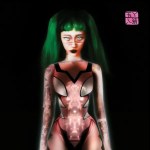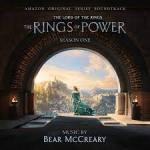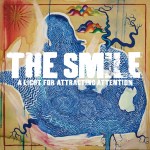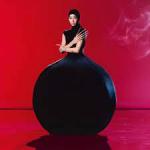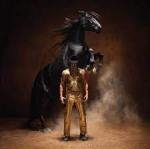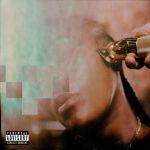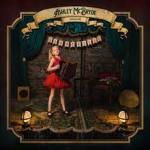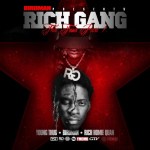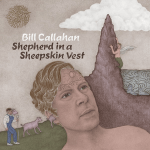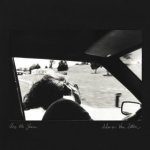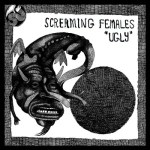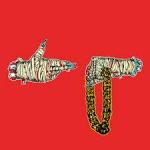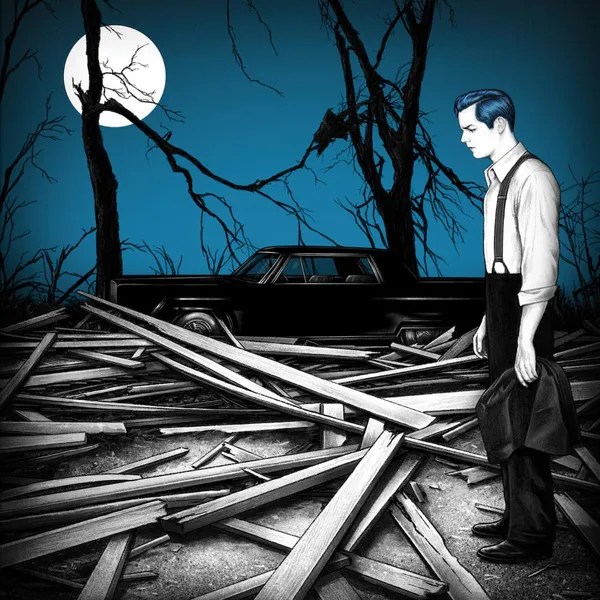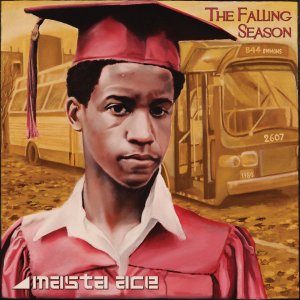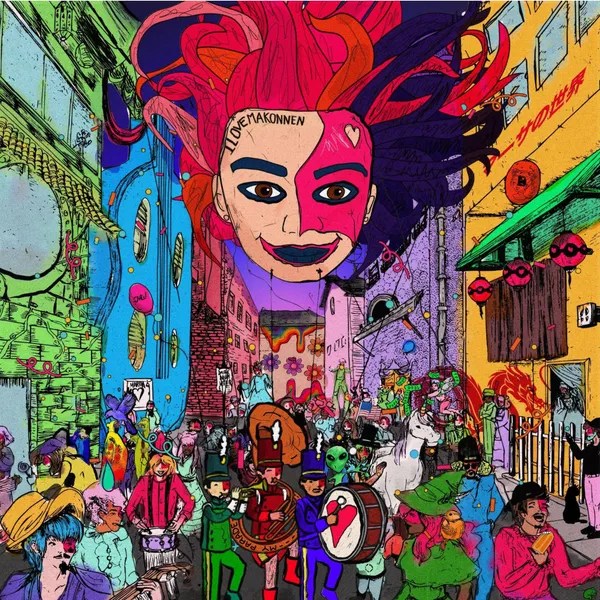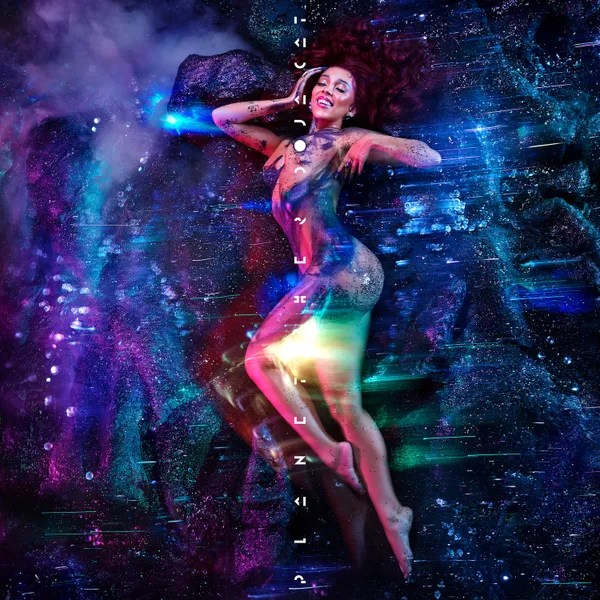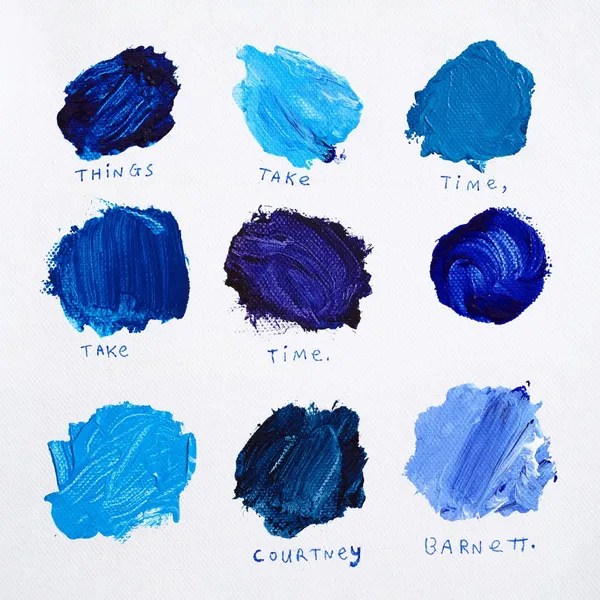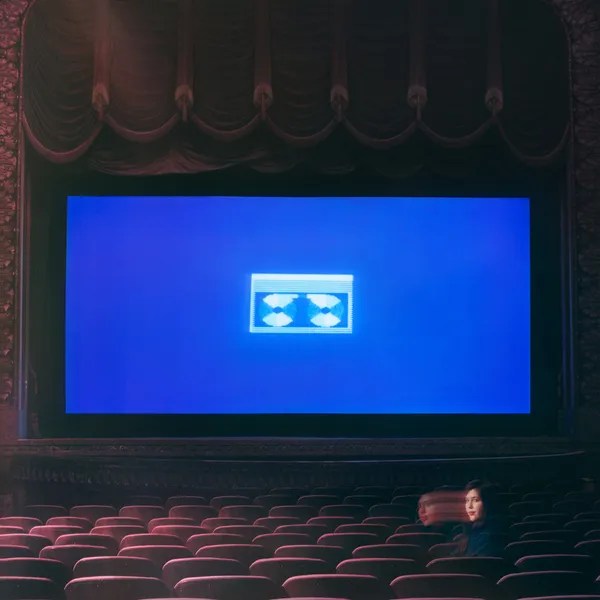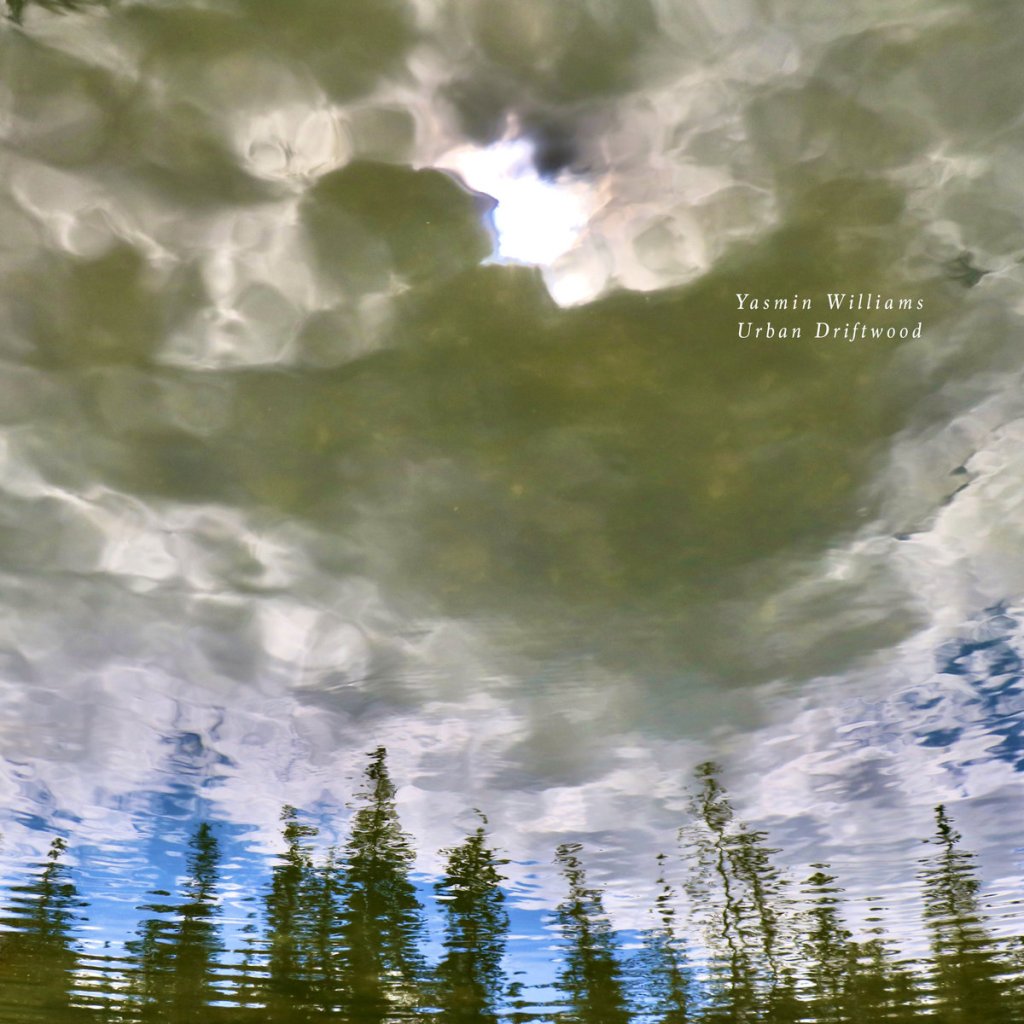
So here we are at the end of another installment of the ’20s, and it’s tough to see the silver linings at the moment. 100 years ago, things were “roaring,” and we could use that same adjective now, just to describe forest fires and hate rallies and Kanye West interviews that are also hate rallies. But certain things will still always be good. Unexpected phone calls from old friends. Even more unexpected mid-term election victories for non-fascists. And music. Music has always been magic, but even more so today. Harmonious transmissions from around the world are available to us with a tap of the finger, on something we carry around in our pockets. So yeah, I am hopeful at the end of the day. I believe there are more good people out there than bad. These 20 albums helped me hold onto that feeling this year, along with the movie Paddington 2. If you haven’t seen Paddington 2, close this stupid tab and watch it now! Happy holidays everyone!
20. Charlotte Adigéry & Boris Pupul – Topical Dancer
The campaign of Pennsylvania senator-elect John Fetterman is rightfully getting credit for using humor to expose its opponent as a clueless, depraved joke. Serious attacks have their place, but it’s tough to recover from a sick burn. On Topical Dancer, the Belgian electronic duo Charlotte Adigéry & Boris Pupul use acidic wit and unapologetic dance grooves to address racism, rape culture, xenophobia, and cyberbullying. The reality of these worse-than-ever global problems cuts deeper in this context than it does on the news, as these talented people of color use bass, drums and synths to turn “laugh to keep from crying” into a disco mantra. “Don’t say ‘I’m allowed to say that because I grew up in a black neighborhood’ / Say ‘my n…eighbor,'” advises Charlotte Adigéry on “Esperanto,” a hilarious instruction manual for the privileged that starts Topical Dancer like a gauntlet thrown. The sunny melody of “Blenda” clashes unforgettably with its chorus: “Go back to your country where you belong / Siri can you tell me where I belong?” And on my personal 2022 song of the summer, the less-is-more funk jam “C’eci n’est pas un cliché,” every lyric is a pop trope (e.g. “You’rе my baby tonight / I wanna hold you real tight”). It’s pop criticism, in the form of a great pop song.
19. Maha – Orkos
Apple Music is my monkey’s paw. During the mp3 mania of the early oughts, I wished for access to any song, without waiting 47 minutes for Limewire to download it on my parents’ PC. I got my wish. And now the sheer volume of music available to me is a daily reminder of how I will never come close to hearing it all. With the resurfacing of Orkos, a forgotten Egyptian pop album recorded in 1979 and only released on cassette, my existential crisis deepens – what about all the lost masterpieces out there that I will never get to hear? Maha, who cut her chops as the vocalist in Salah Ragab’s Cairo Jazz Band, faded into obscurity after Orkos went nowhere. But with her approval, the label Habibi Funk has finally given her achievement the attention it deserves. From the sprightly Latin percussion of “Orkos” to the candlelit Bond-theme energy of “Kabl Ma Nessallem We Nemshy,” this is an artisanal melting pot of discotheque-ready grooves and gorgeous orchestral flourishes. Maha’s captivating, nightclub-Nico voice is the throughline. It’s all so mesmerizing, it keeps me from worrying about what I’m missing and appreciating what I was lucky enough to find.
18. Bartees Strange – Farm to Table
“There’s reasons for heavy hearts.” This is the first lyric we hear on Farm to Table, the second LP from Oklahoma indie rocker Bartees Strange. It’s the perfect introduction to a record full of big confessions and bigger crescendos. In interviews, Strange talked about how rising to fame at the outset of the pandemic made him feel guilty, and I believe him. Because these song structures act as mirrors of his conflicted feelings, despairing deeply before jumping for joy. As Strange takes us through the reasons his particular heart is heavy – survivor guilt, climate change, the perils of fame, turning into your parents – he buoys each emotion with a pitch-perfect production choice. “Wretched” begins with a sea of ghostly synths, as he sings “Day light doesn’t seem to come up as fast / When it’s you I’m haunting.” Then come the guitar chords, with the more urgent “I can’t be here lost and abandoned.” When the full band finally roars to life, it knocks Strange out of his rut, giving us a mantra for our toughest days: “Sometimes it’s hard but you know I’m thankful.”
17. Yeule – Glitch Princess
In a recent column about mass shootings, New York Times right-wing jellyfish Bret Stephens said this: “I know the research hasn’t proved this, but I suspect violent video games also have a lot to do with both socially isolating and numbing the minds of troubled teenage boys.” He’s right about the first part – the American Psychological Association has found no such evidence. I’m guessing Stephens might not be a fan of Yeule, an experimental electropop artist who took her name from a Final Fantasy character and sings about the nuances of depression from the safe space of her avatar. “You’re the only one who knows me / I can’t tell anyone,” the Singaporean confides from underneath a blanket of synthesizers on her second LP. Her lyrics are full of scars and demons, bites and bruises, suicidal ideations. Yet Glitch Princess isn’t a depressing listen. It’s an act of therapy buoyed by an avant-garde musical spirit, finding just the right synth patch for every wound, culminating in an act of psychological generosity – a four-hour ambient experience that places us deep in the stress-evaporating embrace of technological art.
16. SpiritWorld – Deathwestern
For those of us who shrink at the prospect of confrontation, heavy metal can be ideal fantasy fuel – you can sit in the center of its chaotic swirl and act out what you would have said to that kid in high school who told everyone you had dandruff when you had BO, not dandruff. (Fuck you Scott, you can’t even bully right!) Undoubtedly, the second LP from the Las Vegas thrash machine SpiritWorld provides this service. It’s a half-hour of relentless riffage and locked-in grooves, heavily indebted to vintage Slayer and therefore absolute catnip for me. But it also takes advantage of another benefit of the genre – a high tolerance for weird-ass concepts. Deathwestern is bandleader Stu Folsom’s concept album about the anti-Christ arriving in the Old West, complete with an Ennio Morricone-style intro and some instantly iconic bad-trip album art that lets you know exactly what you’re in for. “I could’ve swore I saw the devil on a sawdust floor / In a honky-tonk in North Texas,” Folsom screams. “But maybe it was just the booze / Or maybe all the mescaline.” The way the guitars chug and the drums swing, I can’t help but believe him.
15. Bear McCreary – The Lord of the Rings: The Rings of Power
The Rings of Power, Amazon’s billion-dollar franchise gambit, was one of the best TV shows of 2022. Leaning heavy into themes that attract fans of all ages to J.R.R. Tolkien’s work – small folk doing great deeds; races uniting to face a common enemy; the unshakeable power of friendship – the show is the bright, hopeful, majestic anecdote to the hard-R nihilism of Game of Thrones. And some of the credit has to go to composer Bear McCreary. Somehow, his dynamic, anthemic score manages to pay homage to original Lord of the Rings film composer Howard Shore (who contributes the show’s main title theme), while never making it feel like we’re treading familiar ground. Each character and location comes to life with its own indelible melody, like a favorable wind from the West that clears our path to understanding. The mournful-but-determined French horns of “Galadriel,” puckish cellos of “Durin IV” and banner-waving theatrics of “Numenor” add profound tone and shading to the viewing experience, and transport us right back to this vision of Middle Earth on repeated listens. Turns out Tolkien’s world isn’t the only one where magic is real.
14. Kendrick Lamar – Mr. Morale & The Big Steppers
“I’ve been going through something. Watch out.” If you were expecting Kendrick Lamar’s fifth LP to be another collection of trunk-rattling bangers, the Compton rapper wastes no time setting you straight. Mr. Morale & The Big Steppers is a double-album in both structure and ambition, 18 tracks that detail the Pulitzer-winner’s recent journey through psychoanalysis with little regard for what’s gonna sound good at the barbecue. It’s both thrilling and a bit uncomfortable to realize how little Lamar is holding back, whether he’s dragging the phrase “daddy issues” out of its misogynistic ditch, staging a vicious domestic argument, or honoring his trans aunt while also re-enacting the casual homophobia of his former self. The production choices are quieter, and that helps. Drums take a back seat to subdued pianos and organs, which act as beta blockers, evening out the raw intensity of Lamar’s incredibly focused performance. His problems aren’t universal – when he says “you can’t please everybody,” he’s talking about making art that the whole world is waiting for. But by baring his soul like this in the face of immense pressure to stay on top, he’s modeling what our own priorities should be.
13. The Smile – A Light for Attracting Attention
It wasn’t always clear how Radiohead would handle aging. It’s healthy to have a sense of one’s own mortality, but these guys have always been obsessed with the pointlessness of it all. “Cracked eggs / Dead birds / Scream as they fight for life,” sang a 26-year-old Thom Yorke on the final track of the disillusioned masterpiece The Bends. 27 years later, this side project from Yorke, guitarist Jonny Greenwood and drummer Tom Skinner has an outlook that’s just as bleak, but it’s informed by something different. A Light for Attracting Attention delivers what we’d hope from a late Radiohead record – Yorke’s voice beckoning like an alien siren, post-punk grooves elevated by odd time signatures, waves of melody soothing us out of nowhere like a radio broadcast from a happier time. But there are some elements that are purely The Smile, too – most prominently Skinner’s drum solo that kicks off “The Opposite,” which sounds like the beginning of a sweaty funk workout from The Meters. For an album that’s not interested in being catchy, this rhythmic pulse from a live drummer is critical, helping us understand that even nihilism can have a rhythm. “When we realize we are broke and nothing mends / We can drop under the surface,” the 53-year-old Yorke observes on the closing “Skrting On the Surface.” It’s not an argument for suicide, but acceptance. The older we get, the thinner the ice. What’s wrong with picking out our wetsuit?
12. Hurray for the Riff Raff – Life on Earth
Nobody wants to stare disaster in the face. But those who must can gain a kind of superpower – the clarity of sadness. And on their devastating eighth album, New Orleans singer/songwriter Alynda Segarra (who fronts a rotating group of bandmembers as Hurray for the Riff Raff) uses that clarity as the engine of great art. Life on Earth is as serious as its title would suggest, putting listeners in the shoes of narrators who have been abandoned, assaulted, disbelieved, punished for crossing an imaginary line that we call a border. Yet Segarra is skillful and empathetic enough to find the eyes of her characters’ hurricanes, and it’s from there that we receive this transmission of stirring neo-folk songs. The arrangements are sparse but feel panoramic, Segarra’s guitar and vocals filling our speakers fully, the occasional drum machine only adding to the authentic sense of being one person in a massive world. When a new element is introduced, like the gorgeous second-line horn arrangement on the title track, it’s like welcoming a new friend inside, who knows everything that’s happened. “I just wanna be free / Get over it in time / Push it out of my mind,” Segarra sings. That may be harder than it sounds, even impossible. But when we can say what we want out loud with such clarity? That’s called hope.
11. Chat Pile – God’s Country
It’s always a risk to write lyrics that state things plainly. John Lennon’s “Imagine” continues to be a go-to whipping boy for its simple, supposedly naïve sentiments about peace, love and religion. So when Raygun Busch, lead singer of Oklahoma City noise-rock band Chat Pile, takes on the plight of the unhoused by screaming “WHY DO PEOPLE HAVE TO LIVE OUTSIDE?!?!?” – its gutsy directness lands like a wrecking ball to HUD headquarters. Somehow, this very, very loud quartet keeps up this level of focused, visceral outrage for the entirety of its debut LP. Its choice of subject matter warrants nothing less. Mass murder. Industrial accidents. Drug addiction. And if you take this journey through the shadow of death, the band has a special treat waiting for you – a 9-minute tragicomic epic about seeing a vision of the McDonaldland character Grimace smoking weed in your bedroom during a mental breakdown. (Now there’s a sentence I never expected to write.) The true magic of God’s Country is that you can choose what kind of fire you want in your belly. Is it the righteous fury of the lyrics? Or the sweaty, borderline-unhinged adrenaline of the music? Or if you’ve eaten your Wheaties that day, you can try to experience the whole damn thing – the muck and the thrill of life in one inflammable cocktail.
10. Rina Sawayama – Hold the Girl
Pop music’s connection to commerce will always render it suspicious to some music fans. But crafting hooks and rhythms that resonate with a massive audience is really fricking hard. And if you happen to have that rare ability, pop’s blurry genre boundaries grant you a little creative wiggle room, which is sometimes enough to make hits without compromises. If my poptimism sounds far-fetched, check out Hold the Girl, the chameleonic second LP from Japanese-British pop singer Rina Sawayama. Clearly a student of 21st-century divas (Gaga, Kesha, Pink and Rated R-era Rihanna have all shaped her sound), Sawayama knows her way around the anthemic dance-pop grooves of today. But she’s just as clearly a child of the ‘90s, dabbling in Pablo Honey-drenched alt-rock (“Forgiveness”) and Nine Inch Nails-indebted industrial melodrama (“Your Age”). Then there’s “Send My Best to John,” a lovely, gut-wrenching folk song told from the perspective of an immigrant mother struggling with her son’s coming out. “We both had to leave our mothers to get the things we want,” Sawayama sings, empathizing with everyone involved while also inspiring us to reach for our lighters and raise them up high.
9. Flo Milli – You Still Here, Ho?
It seemed unlikely that the 2000s “dating show” Flavor of Love would contribute anything of lasting value. Yet out of its ashes rose Tiffany Pollard (aka “New York,” because the show treated women like dogs for its host to name). Confident, hilarious, and loyal to her mother, Pollard went on to be the star of her own reality TV universe. She was a better hypeman than Flava Flav could ever be. So when Pollard shows up on Alabama rapper Flo Milli’s debut LP, it bodes well. “Princess of this rap shit / Get in line peasants,” Pollard boasts about this star in the making. It’s not hyperbole. A viciously clever lyricist who has a god-given ability to turn lines into hooks, Flo Milli is our poet laureate of why she’s the shit and you suck. You Still Here, Ho? delivers on the casual disdain of its title, filled with imaginative ways to mock her haters. But the tracks where Milli is focused on her own awesomeness are even better. On the gargantuan banger “Big Steppa,” she tells us how expensive her shoes are while also warning us that we’re about to get trampled: “Christians on, dancin’ with the devil / Red hot lips no pepper / I’m a big stepper.” And on “F.N.G.M.,” she extends her hype game to her successful girlfriends, inverting the misogyny of an old Lil Wayne hit over a vintage 808 groove. “Flo Milli, I love you princess,” shares Pollard on the outro. A talented woman beating a rigged game couldn’t ask for a better mentor.
8. Sudan Archives – Natural Brown Prom Queen
I think the last time I was really, truly homesick was my first few weeks as a college freshman, ping-ponging between knowing I was doing “the right thing,” and wondering how the right thing could feel so lonely. During the pandemic, singer/songwriter/violinist Brittney Parks started to get that queasy feeling, longing for her hometown of Cincinnati from her career homebase of Los Angeles. Unlike me, she didn’t just cry into her pillow. She made a sprawling concept album that wrestles with these emotions while twisting the R&B genre into whatever shape she feels like. Natural Brown Prom Queen, her second release as Sudan Archives, tells the story of a thinly veiled Parks stand-in called “Britt.” She goes from overcompensating for a man who doesn’t deserve it (“Homemaker”) to making puffed-chest threats to a two-faced friend (“Ciara”) to exploring the emotional minefield that a Black woman has to navigate when she changes her hair (“Selfish Soul”). All while weaving in odes to people and places from back home, including pep-talk voicemails from her mother. The music is as restless as a frustrated expat, shifting from rap to funk to quiet storm to neo-soul, sometimes within the same track. “I just miss my homie T.K. / I just miss my Mama Shay Shay / Homesick,” she sings, leaving no doubt whatsoever where her heart is.
7. Orville Peck – Bronco
I had many issues with director Baz Luhrmann’s ice cream headache of an Elvis Presley biopic. A big one being the filmmaker’s debilitating obsession with his subject’s sex appeal, making it all about how he looked versus how he sounded or what he thought. If Elvis had been blessed with the sartorial and marketing instincts of Orville Peck – a country singer and LGBTQ+ icon who hides his face behind a menagerie of bespoke fringe masks – Luhrmann wouldn’t have known where to point the camera. On his second LP, Bronco, the Johannesburg native uses his ravishing voice to show us all kinds of ways that a human personality can be alluring. “Call me up anytime / Come on baby, cry,” Peck sings to another man, placing vulnerability and masculinity together in a way that still feels rare. “The Curse of the Blackened Eye” puts us in the shoes of a domestic violence victim struggling to move on. “Hexie Mountains” depicts a losing battle with grief, which is every battle with grief. Elvis was a master at elevating lyrics in this way, making us believe he’s caught in a trap with the quaver in his voice alone. Peck is a worthy acolyte and then some. If there’s ever a movie about him, I pray it digs way deeper than Luhrmann’s film, making me feel the way this music does – uplifted, accepted, and alive.
6. Meridian Brothers & El Grupo Renacimiento – Meridian Brothers & El Grupo Renacimiento
When I first heard this magnificent Columbian salsa LP, I took it as advertised – a collaboration between two groups. One must be a duo of talented siblings (Meridian Brothers), the other a collective looking to bring back the glory days of the Bogota scene (El Grupo Renacimiento, or “The Renaissance Group”). None of this is true. The Meridian Brothers aren’t real. El Grupo Renacimiento isn’t real. They sprung from the imagination of one dude – Eblis Álvarez, who has been releasing faux collaborations like this since 2005. This time around, Álvarez uses his “Meridian Brothers” moniker to revisit the sounds of 1970s “salsa dura,” a jammier take on the genre. He invented a vintage salsa dura band, El Grupo Renacimiento, gave them an entire backstory, and told it via a gorgeously animated mockumentary. And then he made an album that made me believe. How is this the work of one musician? The complex interplay between the pianos and guitars, the riptide of syncopation that drives the bass and percussion: all magic tricks. Álvarez’s eccentricities aren’t just conceptual either; these songs revel in them. Pair the off-kilter minor-key melody of “Triste son” with Álvarez’s breezy, back-of-the-throat vocals – which sound like Kermit the Frog living his best life – and you have something only one person in this world could imagine.
5. Kikagaku Moyo – Kumoyo Island
In the beginning of 2022, the Tokyo psychedelic rock band Kikagaku Moyo announced that this would be its last year together, positioning its final album and tour as a loving, appreciative farewell. “Please do not miss this chance to get your tickets, because there will be no next time,” the statement read, without an ounce of bitterness or regret. It makes sense that these guys would be so mature and clear-headed about life’s ebbs and flows; their music is meditative and optimistic, a dream world of melody and rhythm that just might get you up and dancing without you even realizing it. Kumoyo Island is the group’s name for this fifth and final LP, and it also works as a description of the elevated headspace they’ve been creating since they first gelled as a street-performing collective in the early 2010s. You can’t find Kumoyo Island on any terrestrial map. Just press play and you’ll find your way. Whether the quintet is leaning into the enchanting, undulating groove of “Dancing Blue,” soaring through the heady atmospherics of “Meu Mar,” or hitting the distortion pedals on the epic “Yayoi, Iyayoi,” the goal is always to envelop us in a sonic embrace. This one just happens to be a loving hug goodbye.
4. Leikeli47 – Shape Up
It’s one thing to shift from ego-tripping anthems to insecure confessionals when you have a bunch of musicians to shade in the nuances. But on her third album, NYC rapper Leikeli47 traverses this emotional territory like a tightrope walker, favoring minimalist production that ensures the spotlight is firmly on her, 100% of the way. She is the second artist on this list who only appears in a mask, and was doing so before the rest of us had to. There must be something to it – opening your heart to the world from a place of anonymity, a superpower that will score you points with your therapist. “I gotta look both ways when you bring up trust,” the rapper admits over a quiet, frayed soul loop, her vocals loud in the mix to drive home how firmly she’s standing in her truth. An avowed Pharrell Williams fan, Leikeli47 is drawn to skeletal, rumbling, “Drop It Like It’s Hot”-style beats, which rely on empty space as much as drums and bass. Which makes sense because when she’s really feeling herself, like on the opening track “Chitty Bang,” she’s her own orchestra: “I thought I told you lames we are not the same,” she spits over a low, droning bass note. Then there’s the magnificent feminist banger “Carry Anne,” which flips the whole idea of being “ballsy” on its head, a brief theremin loop being the only production flourish. She barely needs instruments to get the whole world nodding. Damn straight we are not the same.
3. Ashley McBryde – Lindeville
The country music machine is littered with amazing songwriters. It just seems like they rarely get the chance to do anything beyond commodifying their audience’s love of neighborhood bars and trusty old trucks. Or so I thought. Because Nashville star Ashley McBryde dropped her third LP this year, and it’s an homage to storytelling with a heart as big as an F-150. McBryde approached Lindeville like a showrunner, sequestering her and five other A-list songwriters in a Tennessee home with the goal of breathing life into a fictional town. This is why we get to feel like a fly on the wall as trailer park neighbors gossip, strip club musicians busk, and the guy who chalks the ballfield teaches us to be grateful. McBryde lets the songwriters trade off on lead vocals, sacrificing the spotlight in the name of character development. But the lyrics are so good, they’d resonate if Elmo sang them. Just the opening lines make us root for and worry about two characters, tossing in some hot goss for good measure: “Brenda put your bra on / There’s trouble next door / Grab a pack of cigarettes and meet me on the porch.” On “Gospel Night at the Strip Club,” Benjy Davis opts to speak the verses, empathizing with every down-on-their-luck Lindevillian he sees. He only sings on the chorus, backed by his fellow storytellers, who properly apply the lessons of the New Testament: “Hallelujah / Hallelujah / Jesus loves the drunkards and the whores and the queers.” If they sang that in church, I might be willing to be saved.
2. Beyoncé – Renaissance
The last three years of our lives have hinged on how we transition. In the face of so many disruptive events, how could we hold onto life’s rhythms? The biggest pop star on earth had this on her mind as she entered the studio at COVID’s height, looking for a way to inspire people having trouble getting back on track. And she found it in the resiliently celebratory world of 1970s ballroom and 1990s dance club culture, crafting an album of disco and house music that’s sequenced like a supreme DJ mix – a mostly uninterrupted journey through decades of Black and LGBTQ+ culture that gives us very little space to stop and dwell on anything else. The magic of Renaissance is all about these effortless transitions. Per usual, Beyoncé brings in an army of incredible writers and producers to make everything glisten just so. But she’s the undeniable maestro. The five-track sequence from “Cozy” to “Break My Soul” is a breathtaking journey of instant classics, chart-baiting empowerment pop transitioning to Nils Rodgers-blessed disco-funk transitioning to Robyn S-sampling, Big Freedia-featuring house. Not only does Beyoncé make all of this work as one continuous jam, she also makes it feel like an attainable level of excellence. “Bet you you’ll see far / Bet you you’ll see stars / Bet you you’ll elevate / Bet you you’ll meet God,” she shares. Feeling comfortable in her confidence, while inspiring us to do the same.
1. Weyes Blood – And in the Darkness, Hearts Aglow
Why does the second installment in a trilogy tend to be the most creatively successful? Because its beginning is immediately familiar, and its ending is both heartbreaking and incomplete. It’s essentially the sensation of a relationship unraveling in the form of an epic tale. In those moments when we ponder Luke’s missing hand, Fredo’s fratricidal fishing trip, or Smeagol ceding control to Gollum for good, we can sit in the unthinkable tragedy and be reminded of our own betrayals and defeats. Safely, of course. Because it’s just a movie, and there’s another one on the way. I’m guessing we’ll be able to add And in the Darkness, Hearts Aglow to this list eventually. The second part of a luminous soft rock trilogy by California singer/songwriter Weyes Blood, this album manages to take us back to the cozy confines of 2019’s magnificent Titanic Rising, and improve upon the formula by framing a break-up in the context of everything else that’s broken. Public health. The biosphere. Our attention spans. The artist has said part one was about “impending doom.” And this sequel is about “feeling around in the dark for meaning,” the doom being upon us. If that sounds too bleak, rest assured that this album is ultimately merciful, shimmering with a level of craftsmanship that feels like a favor to us. Weyes Blood continues to perfectly capture the mix of wholesomeness and sadness that made Karen Carpenter such a soothing presence. As warm and forgiving as these pianos and guitars sound, it’s her deep, sincere voice that’s the real balm. “Living in the wake of overwhelming changes / We’ve all become strangers / Even to ourselves,” she sings on the album’s glorious opening ballad. As lonely as that might make us feel, the chorus is there to catch us: “It’s not just me / It’s everybody.” The artist says that part three is going to be about hope. Until then, I’m going to enjoy feeling so understood and unresolved.
Honorable Mentions: $ilkmoney – I Don’t Give a Fuck About This Rap Shit, Imma Just Drop Until I Don’t Feel Like It Anymore; Marisa Anderson – Still, Here; Big Joanie – Back Home; Bjork – Fossora; Brutus – Unison Life; Bill Callahan – YTI⅃AƎЯ; The Comet Is Coming – Hyper-Dimensional Expansion Beam; Denzel Curry – Melt My Eyez See Your Future; Hatchie – Giving the World Away; Hus Kingpin – Bjorkingpin; Carly Rae Jepsen – The Loneliest Time; Megan Thee Stallion – Traumazine; Muna – Muna; Ozzy Osbourne – Patient Number 9; Porridge Radio – Waterslide, Diving Board, Ladder To the Sky; Pusha T – It’s Almost Dry: Pharrell vs. Ye; Bonnie Raitt – Just Like That…; Rico Nasty – Las Ruinas; Saba – Few Good Things; Eddie Vedder – Earthling; Kurt Vile – (watch my moves); Wet Leg – Wet Leg




